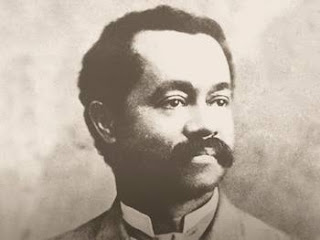Born February 3, 1867, to Thomas and Addie Campbell Turner, a custodian in a church and nurse respectively, this prolific African American Zoologist, scholar and passionate educator, made significant contributions to the fields of zoology, entomology, and psychology.
Charles Henry Turner was still at the prime of his career as an Animal Behaviorist when he provided an evidential demonstration on how
insects can hear and learn.
He was the first to demonstrate that honey bees have color vision and distinguish patterns.
Charles Henry Turner was blessed to have had parents who were avid readers, passing down the knowledge of the hundreds of books they owned to their son to learn and discover more about the world around him.
As a young boy, Turner was fascinated by insects and was curious about their behaviors. After graduating as class valedictorian from Gaines High School, he enrolled in the University of Cincinnati in 1886.
Turner married Leontine Troy in 1887. The couple had three children during the marriage: Henry, Darwin, and Louisa Mae. While at the University of Cincinnati, Turner majored in biology and went on to earn his B.S. (1891) and M.S. (1892) degrees. In doing so, he became the first African American to earn a graduate degree from the University of Cincinnati.
After reportedly contacting Booker T. Washington of the Tuskegee Normal and Industrial Institute about potential teaching opportunities, Turner landed a position as a professor at Clark College in Atlanta, Georgia. He also served as chair of the Department of Science and Agriculture at the college from 1893 to 1905. During his time in Atlanta, his wife, Leontine, passed away (1895).
Turner continued to pursue education and earned a Ph.D. in zoology from the University of Chicago in 1907. He became the university’s first African American recipient of such an advanced degree.
That same year, he married Lillian Porter and taught biology and chemistry at Haines Normal and Industrial Institute in Atlanta. The couple later moved to St. Louis, Missouri, after Turner acquired a position at Sumner High School, where he continued to teach African American students from 1908 to 1922.
As part of his many works over a period of thirty years, he published widely on discoveries in his field of scientific study as well as on civil rights and education. In total, he authored over seventy articles. In addition, during the early decades of the twentieth century, he served as a civil rights leader in St. Louis, Missouri ’s African American community.
His later experiments with honey bees contributed to a better understanding of invertebrate animal behavior. These studies established that bees see in color and recognize patterns. His two papers on these studies, Experiments on Color Vision of the Honey Bee and Experiments on Pattern-Vision of the Honey Bee , appeared in Biological Bulletin in 1910 and 1911 respectively.
Turner conducted many other experiments and published papers that elucidated insect phenomenon such as hearing in moths, insects that play dead, and learning in cockroaches.
Additionally, he published studies on bird and crustacean brain anatomy and is credited with discovering a new species of invertebrate.
Throughout his life, Charles Henry Turner was an advocate for civil rights and argued that racism could be conquered through education. He published papers on the subject in 1897 and 1902.
Turner retired from Summer High School in 1922 due to failing health. He moved to Chicago, Illinois, where he lived with his son Darwin until his death on February 14, 1923.
Be Careful : Dear Audience Don’t provide your bank or credit card and Cash without any eligibility letter from embassy/company/school or government because fake companies are also working and posting visa, job or scholarships. be careful when applying for any of these. If you see something suspicious, have any question please directly message us using our CONTACT FORM
Charles Henry Turner: First zoologist to demonstrated that insects can hear and learn
 Reviewed by Admin
on
June 10, 2019
Rating:
Reviewed by Admin
on
June 10, 2019
Rating:
 Reviewed by Admin
on
June 10, 2019
Rating:
Reviewed by Admin
on
June 10, 2019
Rating:












No comments: